The Book of HOV
Brooklyn Public Library
Brooklyn, New York
Through October
Recently, the Soldiers’ and Sailors’ Arch at the center of Grand Army Plaza was wrapped in scaffolding—a la Christo and Jeanne-Claude—to undergo restoration. Nearby, another landmark has also been refaced for greatness: The curved art deco facade of the main branch of the Brooklyn Public Library (BPL). It has been papered in white with blocks of chunky, monospace text (designed by ABC Dinamo), lyrics from one of the borough’s most prominent celebrities: Jay-Z, born Shawn Carter in Bedford-Stuyvesant’s Marcy Projects. On the plaza in front of the facade, a cube of screens introduces the show: The Book of HOV, a career-spanning installation about the hip-hop star and mogul. Inside the library, visitors see his tale unfold across eight chapters, which stage memorabilia, ephemera, photos, art, and artifacts across the first and second floors. The feat elevates the profile of the library and is already drawing in Brooklynites at a historic moment: Hip-hop will turn 50 next month.
The grand effort preaches corporate hip-hop’s prosperity gospel: The show “is more than a tribute to a legendary artist and entrepreneur,” according to the opening declaration of its takeaway zine. “It’s an inspiring reminder that, no matter where you start, with talent, hard work, and a little bit of that ‘Empire State of Mind,’ you can change the world.” Jay-Z, readers learn, is a “beacon of hope for those who dare to dream beyond the confines of their circumstances.”
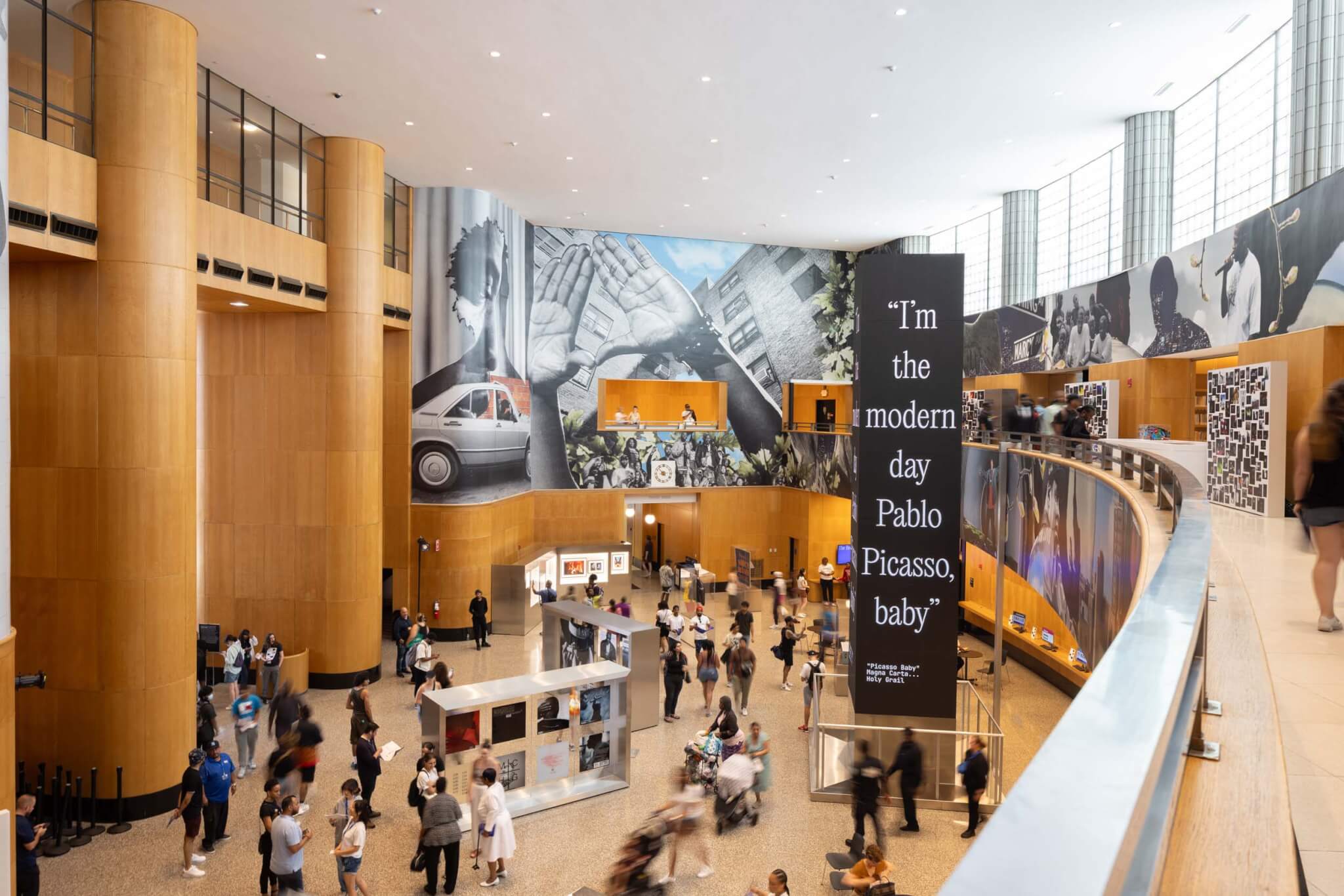
The tribute came as a surprise to both library users and Jay-Z himself, as his team at Roc Nation developed the show without their empresario’s knowledge. (“I know he wouldn’t let us do this,” Desiree Perez, Roc Nation’s CEO, told the New York Times.) One might wonder how HOV would have told the story differently, had he had the chance to explore this format. The remarkable show is presented with such catalogic intensity that it approaches braggadocious territory, but that’s nothing new for a mogul worth $2.5 billion who named his companies after the Rockefellers and adapted his HOV moniker (originally J-Hova, then H.O.V.A.) from Jehovah, the name of God in Judaism.
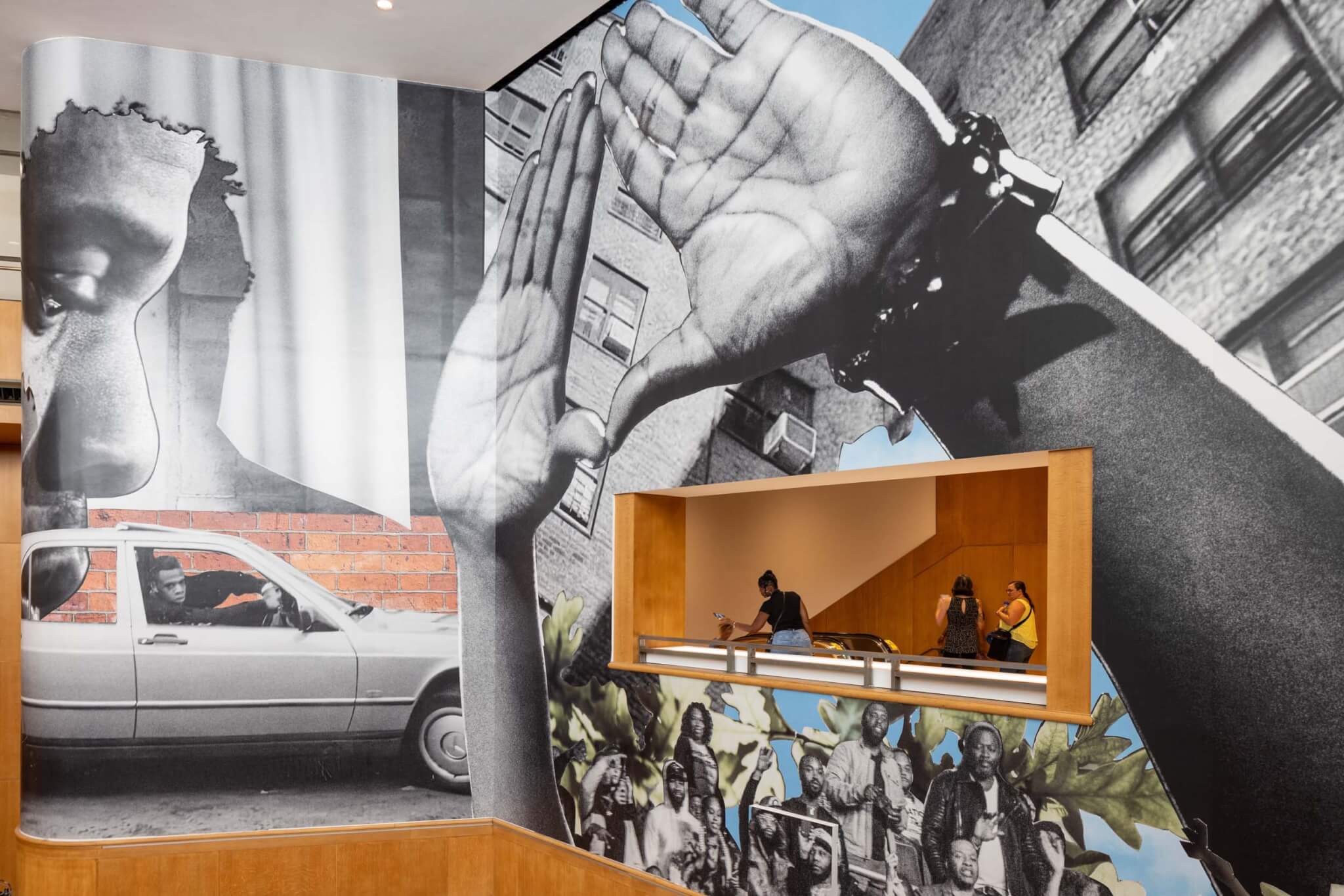
Roc Nation led the charge but relied on additional creatives for its execution: General Idea Group for exhibition design and creative direction and Tribe Design for exhibition production design and management. The show’s graphic design is trendy and wouldn’t feel out of place promoting a natural wine bar or an electronic music festival. (It translates to the exhibition’s great website, by Linked by Air, which takes viewers on a journey of ephemera similar to the in-person show.) It begins with a spread of artworks in the library’s atrium—including HOV’s Hands (2023), by Daniel Arsham. It then proceeds through additional displays like a recreation of Jay-Z’s studio in Chelsea, Baseline Studios, presented as Jay-Z’s “sonic sanctuary” where the artist recorded “some of the greatest music in history.” On the upper levels of the atrium, an impressive mural by Jazz Grant adorns the light-washed walls.
The most interesting chapter is the fourth one, “Did It All Without a Pen,” which displaces the library’s new book section to showcase the physical ephemera of Jay-Z’s productions: Visitors can cue up the records sampled to make HOV’s beats on turntables built into to the silver display cases and see the reels, DATs, Hi8 tapes, and floppy disks that captured the output of Baseline Studios. A room upstairs chronicles the rapper’s “trolling” of Oasis in 2008: When Noel Gallagher, the band’s lead singer, criticized Jay-Z’s selection to headline the Glastonbury music festival, the Brooklynite responded by opening his set with a cover of “Wonderwall.” Other sections verge on obsessive: What good is it to see a tangle of passes from past tours and festivals? Or a vitrine of Jay-Z magazine covers?
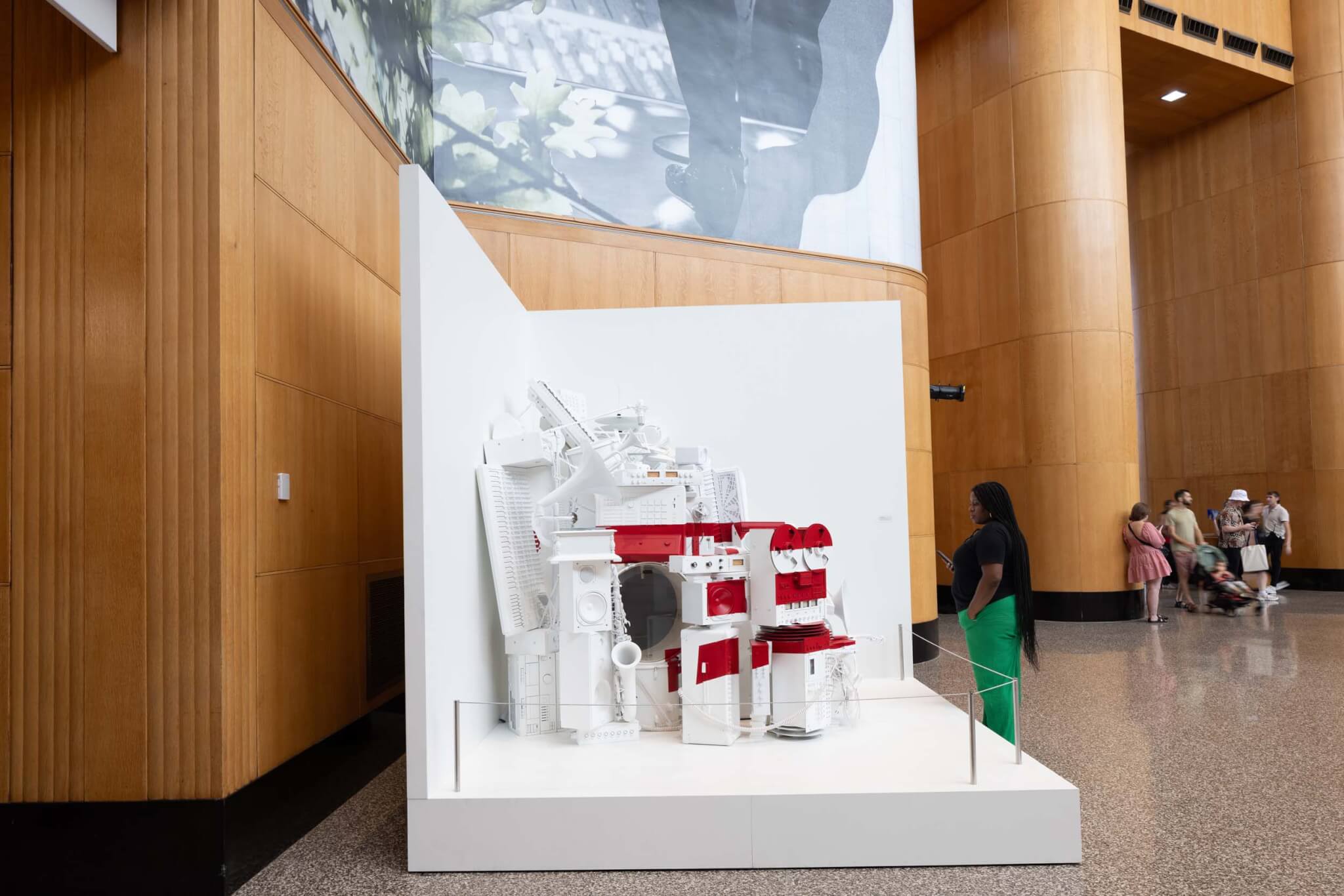
Jay-Z has been a part of American popular culture since at least 1998, when his hit “Hard Knock Life” flipped a sample from Annie; the song’s album, Vol. 2 … Hard Knock Life, won a Grammy that year. Since then, Jay-Z has won 23 more. He’s tied with Kanye West for the most Grammy wins for a rapper. (The pair’s 2011 album Watch The Throne is another landmark in Jay-Z’s hit-laden career.) He’s also a busy businessman: He founded the recently-sold streaming platform TIDAL and launched D’USSÉ cognac and Armand de Brignac champagne. Jay-Z briefly owned a sliver of the Brooklyn Nets alongside real estate developer Bruce Ratner, who lured the franchise to Brooklyn and anchored his Atlantic Yards development with its new stadium. (A model of the complex, designed by SHoP Architects, is included in the show.) Linda E. Johnson, president and CEO of BPL, has been married to Ratner since 2020.
The library is offering a commemorative set of thirteen unique library cards to users, one for each of Jay-Z’s albums. Additionally, a set signed by the artist will be auctioned by Christie’s. Roc Nation “will also be providing every record that has ever been sampled within Carter’s extensive body of work to [BPL’s] vinyl collection; as well as a large selection of books to both Central Library and Marcy Library,” according to BPL’s announcement. “In addition, as part of its support for library programming and initiatives, Roc Nation will be providing a monetary donation to BPL.” In return, Carter and his mother, Gloria, will be the honorees at BPL’s gala in October.
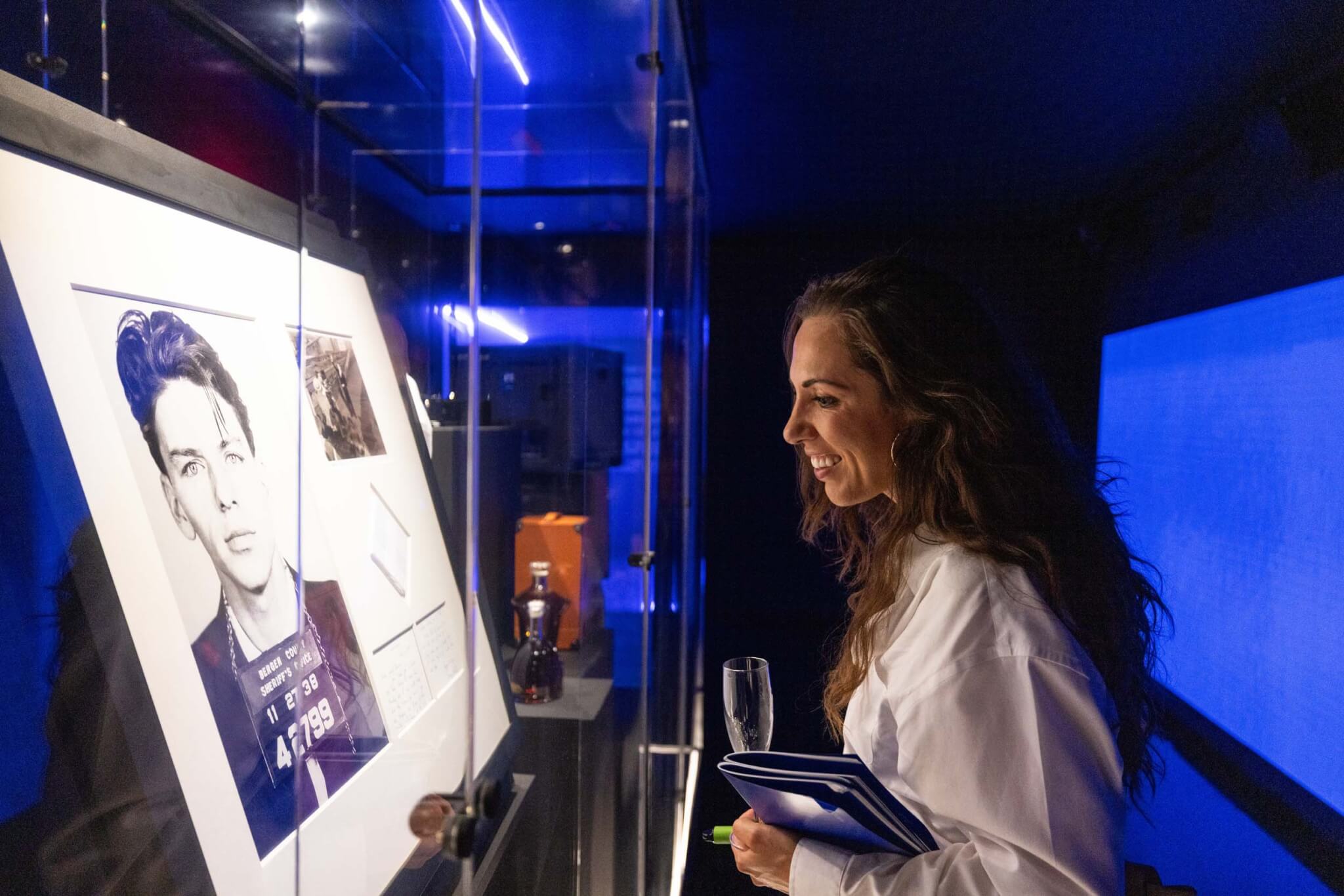
Critics were quick to pounce. Writing in Hell Gate, Adlan Jackson declared that the exhibit “is largely vacant of substance. There’s just not much here for you to engage with unless you’re a Jay-Z superfan, and want to look at a jacket he wore once. If that’s you, that’s fine, but even you might wonder why on earth it’s in the middle of the fucking library.” Theodore Hamm, writing in Hyperallergic, concluded that, given the threat New York City’s budget cuts for libraries, “The Book of HOV is thus unlikely to be the last time that [BPL] hosts a vanity show for a billionaire.”
Regardless, the show is popular, as evidenced by a tripling in BPL attendance. On Twitter, writer and professor Shannon Mattern praised the show before going to see it for herself, saying on Twitter “Like it or not, most cultural institutions do blockbuster shows + host private events.” Libraries have been boasting about the feats of benefactors for centuries, so it feels misplaced to criticize the act at a moment when such praise can be rightfully claimed by Black people. As Mitch McEwen responded, “at least Jay-Z’s money didn’t come from blowing up mountains for coal and excavating iron.”
The effort is a sweeping homage, but viewers won’t learn more about what’s behind the armor. Beyoncé, Jay-Z’s wife, appears in a handful of photographs, and we learn nothing about their family or their relationship as a power couple. The show no doubt buoys Jay-Z’s public image following Beyoncé’s 2022 album Renaissance, which was named Pitchfork’s Album of the Year.
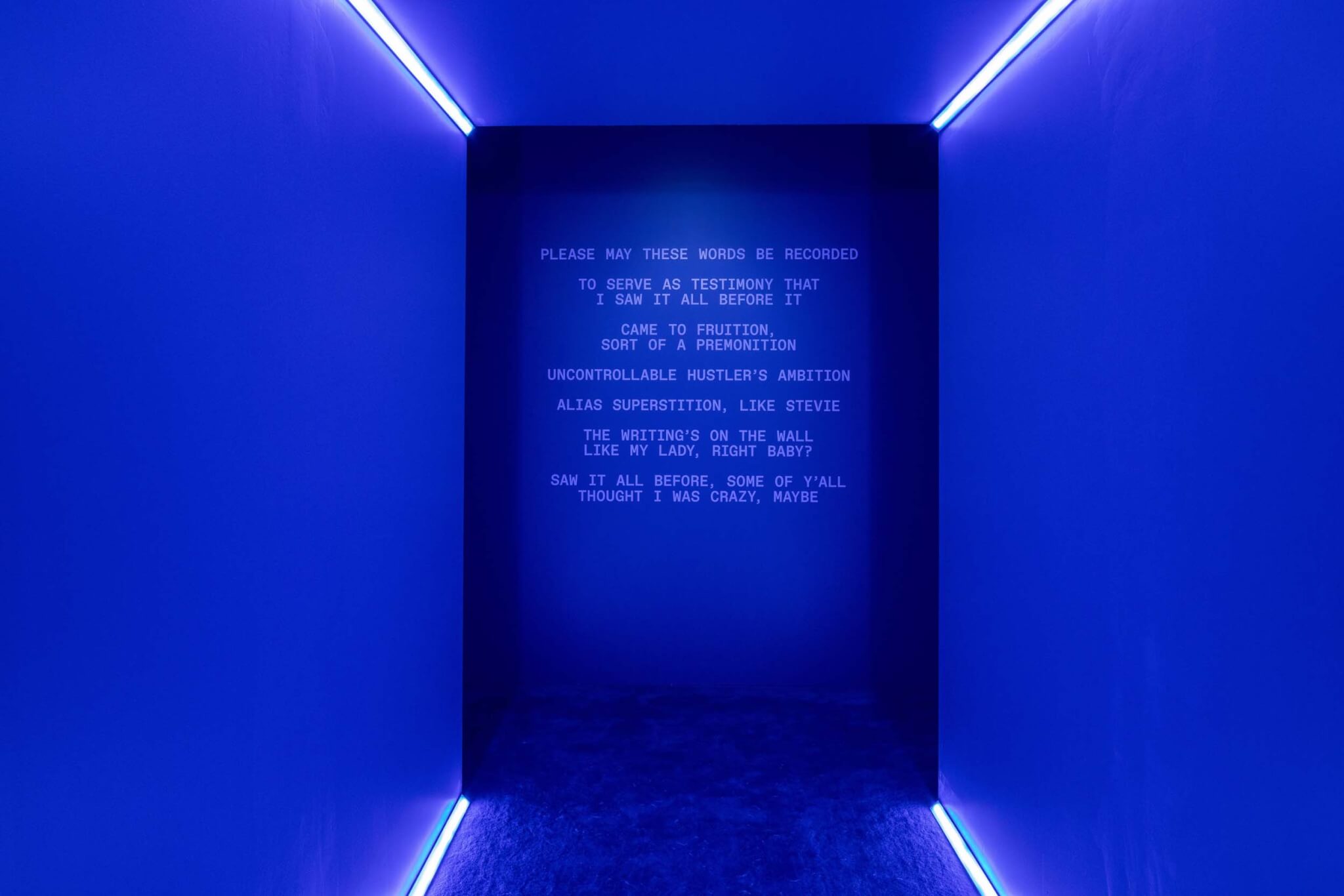
Regardless, the show is attracting new crowds to BPL’s main branch and much of the archival material is interesting. It drives home the worthwhile point that music isn’t (just) ephemeral sounds streamed on demand: It is physical, made in studios with real instruments, written in fits and scribbles on any nearby scrap of paper, and recorded to electromagnetic spools which decay in time. “Music is media,” Mattern mused.
Music can also generate immense wealth. Jay-Z has had his eyes on the prize the whole time: “We used to fight for building blocks / Now we fight for blocks with buildings that make a killin’,” he rapped on “D’evils” from his 1996 debut album Reasonable Doubt. The fruits of his labor, now on view at BPL, speak for themselves.











